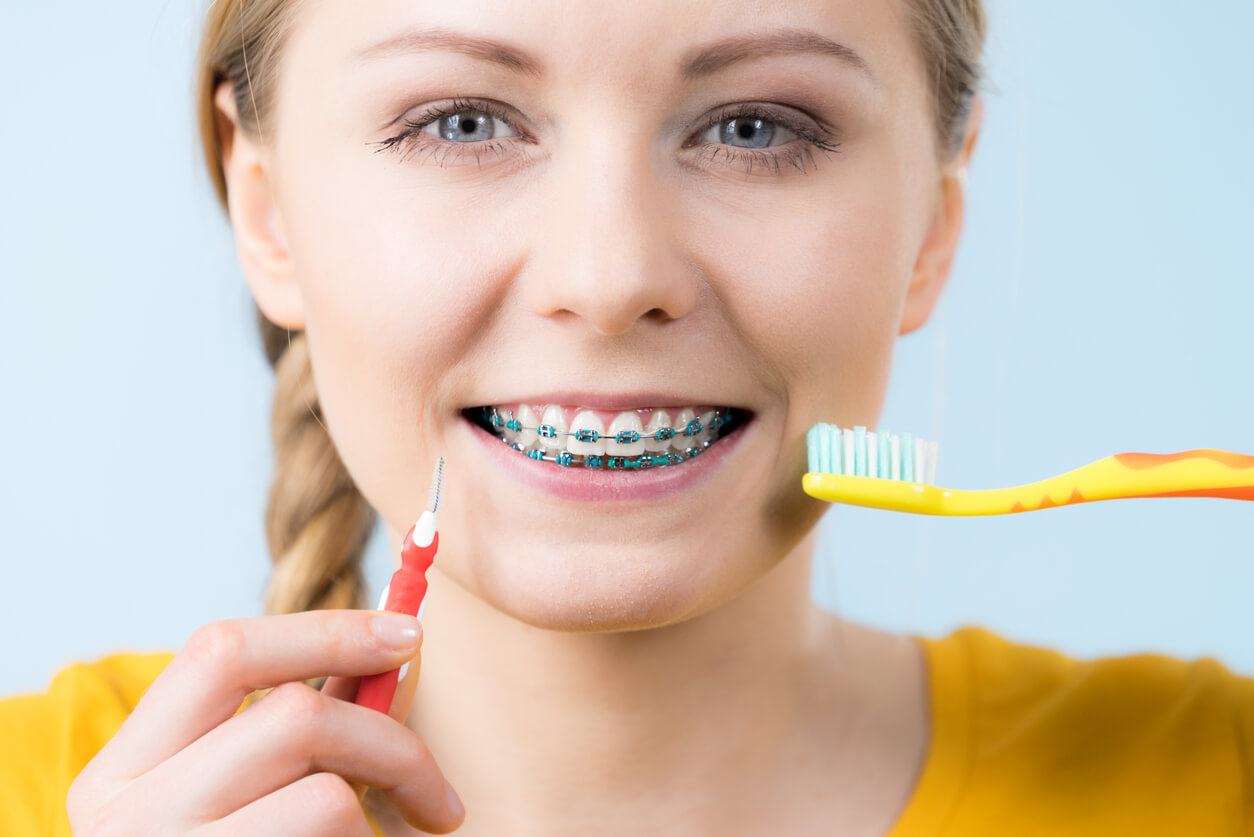

What Is an Orthodontic Toothbrush?
If you’re undergoing orthodontic treatment or wearing braces, you may be wondering: What is an orthodontic toothbrush and how is it used? In this article, we’ll explain what makes orthodontic toothbrushes different, how they work, and how they contribute to oral health.
What Is an Orthodontic Toothbrush?
An orthodontic toothbrush is a specially designed toothbrush created for individuals undergoing orthodontic treatment. It is intended to effectively clean around braces, brackets, and wires where plaque and food particles often accumulate. Its unique structure allows for more thorough cleaning in hard-to-reach areas, helping maintain healthy teeth and gums throughout treatment.
Design and Structure of Orthodontic Toothbrushes
Unlike standard toothbrushes, orthodontic toothbrushes have a specific bristle pattern. The center bristles are shorter, while the outer bristles are longer, forming a V-shape. This design allows the brush to clean around brackets and wires while still reaching the gumline effectively.
Types of Orthodontic Toothbrushes
Orthodontic toothbrushes come in various forms:
-
Single-tuft brushes: Ideal for cleaning around individual brackets or along the gumline.
-
V-shaped bristle brushes: Designed to brush over wires and around braces effectively.
-
Electric orthodontic brushes: Provide powerful vibration or rotation to remove plaque more efficiently around braces.
Benefits of Using an Orthodontic Toothbrush
Using an orthodontic toothbrush offers several important benefits:
1. Reduces Plaque Build-Up
Brackets and wires can trap food particles, making it easy for plaque to accumulate. Orthodontic toothbrushes are designed to clean these areas thoroughly, reducing the risk of tooth decay.
2. Protects Gum Health
By effectively cleaning along the gumline, these brushes help prevent gingivitis and other gum diseases common during orthodontic treatment.
3. Prevents Bad Breath
By removing trapped food debris and bacteria, orthodontic toothbrushes help eliminate the sources of bad breath.
4. Supports Orthodontic Treatment
Keeping braces clean is essential for successful treatment. These brushes help maintain hygiene, which supports tooth movement and treatment results.
How to Use an Orthodontic Toothbrush
If you’re using an orthodontic toothbrush for the first time, follow these steps:
Step 1: Prepare the Brush
Wet the toothbrush and apply fluoride toothpaste.
Step 2: Clean Around Brackets
Place the bristles around the brackets and move the brush gently back and forth. The short center bristles clean the bracket, while the longer outer bristles clean the gumline.
Step 3: Brush Over the Wires
Brush along the braces, ensuring all surfaces are reached. V-shaped brushes work best for this.
Step 4: Use a Single-Tuft Brush (if available)
For detailed cleaning around brackets and hard-to-reach areas, use a single-tuft brush.
Step 5: Rinse Thoroughly
After brushing, rinse your mouth with water to remove any loosened debris or toothpaste residue.
Additional Tips
-
Brush your teeth after every meal.
-
Replace your toothbrush every 3 months or sooner if bristles are worn.
-
Use floss or interdental brushes and mouthwash to enhance your oral hygiene routine.
Frequently Asked Questions
How often should I use an orthodontic toothbrush?
After every meal, to remove food particles and prevent plaque accumulation.
What should I avoid when using it?
Avoid applying excessive pressure, which could damage the braces or gums. Brush gently and consistently.
How is it different from a regular toothbrush?
Orthodontic toothbrushes have specially arranged bristles that clean around wires and brackets more effectively than standard brushes.
Conclusion
An orthodontic toothbrush is an essential tool for anyone wearing braces. It helps ensure thorough cleaning around orthodontic appliances, protects gum health, reduces plaque, and supports successful treatment outcomes. By following a proper brushing routine with the right tools, you can maintain a clean and healthy smile throughout your orthodontic journey.
